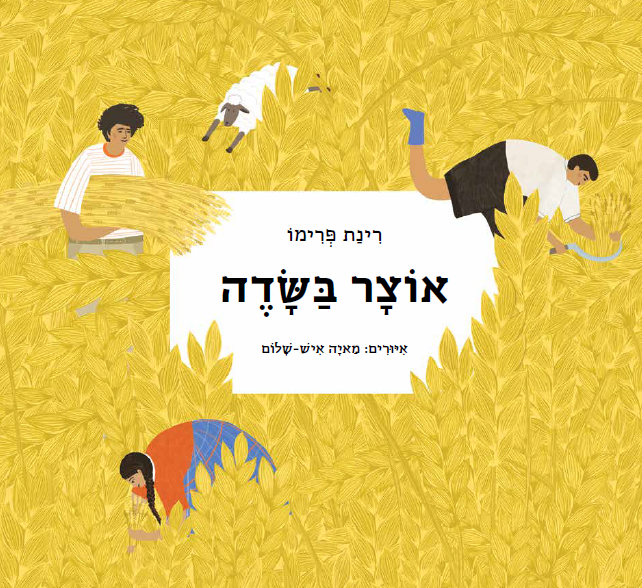אוצר בשדה
מאת: רינת פרימו| איור: מאיה איש שלום
תרגום לרוסית של ההצעות לפעילות בחיק המשפחה
Клад в поле
Автор: Ринат Примо
Иллюстрации: Мая Иш-Шалом
Дорогие родители!
Крестьянин показывает своим детям, где кроется настоящее богатство. Оно в них самих – в любви к земле и тяжелой работе.
Народные сказки и былины передавались из поколения в поколения из уст в уста. Похожие сюжеты встречаются в разных культурах по всему миру. Их сила – в привитии моральных устоев и принципов посредством незамысловатых историй. Ринат Примо пересказала для нас этот сюжет народных сказок, известный во многих вариациях.
«Если будешь ты есть от трудов рук твоих, то счастлив ты и хорошо тебе!» (Псалом 128)
Крестьянин учит своих детей тому, что настоящее богатство – это урожай, который им удалось собрать благодаря упорному труду. Теперь они могут гордиться собой и радоваться успеху.
Священный текст указывает на чувство удовлетворения, которое испытывает человек, видя плоды своего труда. Конечно, иногда удобно насладиться уже готовым продуктом, не тратя сил и энергии на его приготовление, но ведь всем нам знакомо приятное чувство, которое можно достигнуть, лишь сделав что-то своими руками.
Часто мы предлагаем детям готовые вещи. Важно не забывать, как важны малышам ваше внимание и любовь, вложенные в совместные занятия и поделки, и какое удовлетворение они получают от собственной работы.
Читаем и играем дома
- Рассмотрите вместе иллюстрации к книге. На них изображены интересные детали, которых нет в тексте. Чем любят заниматься братья и сестра, пока их отец работает в поле? Какая роль отведена животным? Поищите вместе иллюстрацию, на которой отец говорит детям, что не помнит, где спрятан клад. Спросите детей, какой клад, по их мнению, может быть «зарыт» в поле? Поинтересуйтесь, что они считают «сокровищем», что хотели бы найти в поле, если бы им представилась такая возможность?
- Предложите малышам тоже вырастить что-нибудь. Это можно сделать даже дома. Посейте семена или луковицы, посадите косточки авокадо или яблока в горшок в квартире или на участке во дворе. Поливайте растение, ухаживайте за ним, наблюдайте за его ростом. Для этого потребуется приложить совместные усилия. Возможно, вам повезет не меньше чем героям сказки, и в вашем горшке тоже отыщется «сокровище»!
- Ищем клад дома! Спрячьте в доме «клад», который дети должны найти с помощью записочек-указателей. Детям понравится разгадыватьнамеки, которые вы внесли в указания, и находить разные потайные места в доме.
- Два брата и сестра работают сообща, делясь отличными полезными идеями. Побеседуйте с детьми о разделении обязанностей в вашей семье. Вспомните, что лучше всего получается у каждого члена семьи.
- «Тот, кто трудится на земле, будет досыта есть» (Книга Притчей Соломоновых 28, 19). В поле семья пашет, сеет, собирает урожай.На всех языках мира, и, конечно же, на русском и иврите, существует множество глаголов для описания земледельческих работ. Рассмотрите вместе иллюстрации, подберите слова к действиям, которые на них описаны; сравните рабочие инструменты, которыми пользовались встарь, с современными машинами и приспособлениями.
- В книге говорится о сменяющих друг друга временах года. Знают ли ваши дети, в какое время года сеют, а в какое – собирают урожай? Какое время года в вашей семье любят больше всего? Почему? Предложите детям нарисовать себя в любимое время года.





